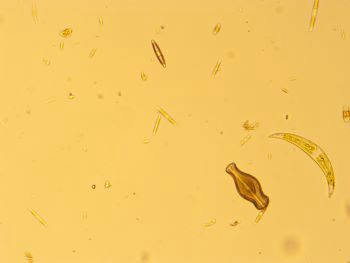How did Michigan’s Au Sable River change the world?
In 1959, 16 fishermen, united by their love of trout and the Au Sable River, gathered at George Griffith’s home east of Grayling, in Michigan’s northern Lower Peninsula. The sportsmen were concerned about the need for long-term conservation of Michigan’s coldwater streams. They were convinced that better and more scientific habitat care would help the state’s trout population thrive, creating not only better fishing, but also a better environment. Nearly 60 years later, Trout Unlimited, the organization founded by those fishermen, has become a national champion of fish habitat conservation.
Trout Unlimited’s founding on the Au Sable is showcased in the Michigan History Museum’s newest exhibition, The River that Changed the World, opening Saturday, Sept. 30. From 10 a.m. to 3 p.m. that day, visitors will get a first look at the new exhibition, and opportunities to engage with guest presenters and hands-on activities.
“The Au Sable River has influenced – and continues to influence – people around the world,” said Mark Harvey, Michigan’s state archivist and the exhibition’s curator. “The stories in the exhibition demonstrate the innovative and unprecedented ways private citizens and state government worked together to conserve and protect the river and sustainably manage its fish populations.”
The exhibition features George Griffith’s 24-foot-long Au Sable river boat , surrounded by river scenes. A re-creation of the Wanigas Rod Shop
, surrounded by river scenes. A re-creation of the Wanigas Rod Shop introduces fly fisherman and rod maker Art Neumann, another founding member of Trout Unlimited
introduces fly fisherman and rod maker Art Neumann, another founding member of Trout Unlimited . Nearby, visitors of all ages can learn how to tie a fly and compare tied flies to real insects under a microscope.
. Nearby, visitors of all ages can learn how to tie a fly and compare tied flies to real insects under a microscope.
The exhibition also introduces the relationship between the Anishinaabe (Odawa and Ojibwe people) and the Au Sable River. It highlights how their use of the river changed with the seasons and includes tools and fish bones from an archaeological site along the river.
The late 19th-century work of state conservationists and private citizens who tried to save the Arctic grayling – the iconic native coldwater fish that once dominated northern Michigan streams – is represented by a “battery” of beakers from the Grayling fish hatchery. Each beaker held thousands of eggs. Arctic grayling were native only to Michigan and Montana in the lower 48 states.
Original paneling and artifacts from the Wolverine fish car, which carried millions of fish by rail across Michigan, tell the story of subsequent efforts to plant trout in the Au Sable. Fred Westerman, former fisheries chief in the Michigan Department of Conservation (the forerunner to the Michigan Department of Natural Resources) and one of the first employees of the Wolverine, once reported: “Frequently … thirty cans of fish would be dropped off at some spooky junction – like in the jack pine at Au Sable-Oscoda with the cemetery across the tracks and the depot a mile from town – on the night run of the Detroit & Mackinac, to await the morning train going up the river branch.”
The exhibit’s final section presents Grayling as a destination for fishing and tourism since the mid-19th century. It combines competing interests and different perspectives on the future of the Au Sable, with an appreciation of the river’s recreational draw. In this section, visitors can sit in a kayak and experience a 360-degree, virtual reality paddle down the Au Sable, either by using an Oculus Rift headset or their own smart devices and cardboard viewers. At the end of the exhibition, visitors are invited share their stories about the rivers that they love and how they might work to protect them.
Current DNR Fisheries Chief Jim Dexter agrees that the Au Sable is a premier outdoor fishing destination, and he applauds the vision and passion of the people who early on recognized that potential.
“As the name of the exhibit implies, the Au Sable is a world-class fishery resource attracting anglers from every corner of the earth. It’s one of the most stable groundwater-influenced watersheds in North America, and produces exceptional trout fishing,” Dexter said. “It wasn’t always that way, though. Without the creation of Trout Unlimited at the Au Sable River, by those who understood the potential of our coldwater resources, Michigan might not be home to one of the world’s greatest trout fisheries.”
The exhibition will run through next summer, and is included with regular museum admission. The Michigan History Museum is a nationally accredited museum located in the east wing of the Michigan Library and Historical Center, on the north side of Kalamazoo Street, two blocks east of M. L. King Jr. Boulevard. The museum is open year-round, seven days a week. For more information, call 517-373-3559 or visit www.michigan.gov/museum.
The Michigan History Center is part of the Michigan Department of Natural Resources. Its museum and archival programs foster curiosity, enjoyment, and inspiration rooted in Michigan’s stories. It includes the Michigan History Museum, 10 regional museums, and the Archives of Michigan. Learn more at www.michigan.gov/michiganhistory.





